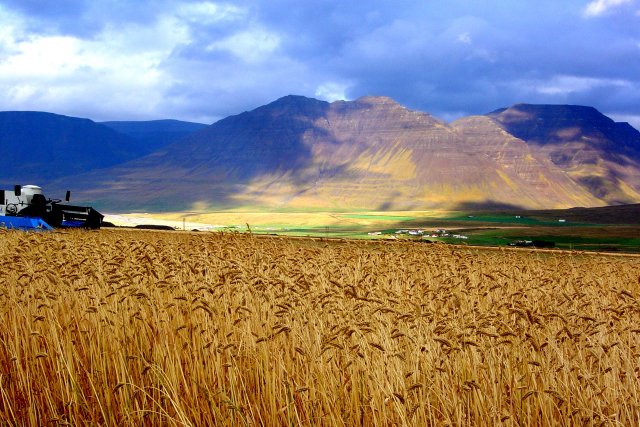Geothermal heat could be useful in growing grains in Iceland
In two decades, the barley market in Iceland could reach 35,000 to 45,000 tons and the wheat market would reach 80,000 tons and it is possible to produce large portion of the wheat domestically.
The comparison suggests that the cost of cultivating a country's grain is comparable to that of neighboring countries.
High, fertile and cheap farmland, combined with low electricity and hot water costs and low pesticide costs are among the main strengths of Icelandic grain production compared to foreign countries. The utilization of geothermal energy could then be both practical and viable.
This is reflected in the recently published report on the promotion of cereal cultivation in Iceland, which will was presented at an open meeting at 11 AM today. The report presents an action plan in 30 points, proposing, among other things, specific support for cultivating grains, both for production and for investment in the necessary infrastructure.
The aim of this project was also to explore the feasibility of a grain pool and define the needs of a minimum supply of grain in the country. The report is prepared by a working group of the Agricultural University of Iceland , written at the request of the Ministry of Food, and Helgi Eyleifur Þorvaldsson, Egill Gautason and Hrannar Smári Hilmarsson formed the working group.
The government pays ISK 500 million to a grain-growing fund
The action plan proposes, inter alia, an annual budget of ISK 500 million for the State to pay into a cereal-growing fund which would pay, on the one hand, production support per kilogram of cereal produced and, on the other, investment support to be paid to support drying plants, storage facilities, transport equipment and threshing machines in the most economically advantageous cereal-growing areas.
“The Grain Association is a company that accepts grain from farmers and sells it on to buyers. The feasibility of forming a grain association was explored by checking the willingness of the largest grain buyers in the country to buy Icelandic grain from such a company. Almost all large grain buyers in Iceland signed a letter of intent. In order to make it realistic to use Icelandic grain for feed and food production, it is necessary for an intermediary, one or more grain pools, to be available between farmers and buyers,” the report stated.
Important to finish the development of an Agricultural Centre
The national cereals and related research needs to be secured, moreover, through long-term funding. The cost of the breeding of barley, wheat and oats is estimated at around ISK 120 million annually. The report notes that it is important to complete the construction of LÍS’s Agricultural Centre to carry out the breeding, research, development and teaching of the field.
A clear crop guide for growing grain in Icelandic conditions is also considered necessary. The report suggests that LbhÍ develop such guidelines.









